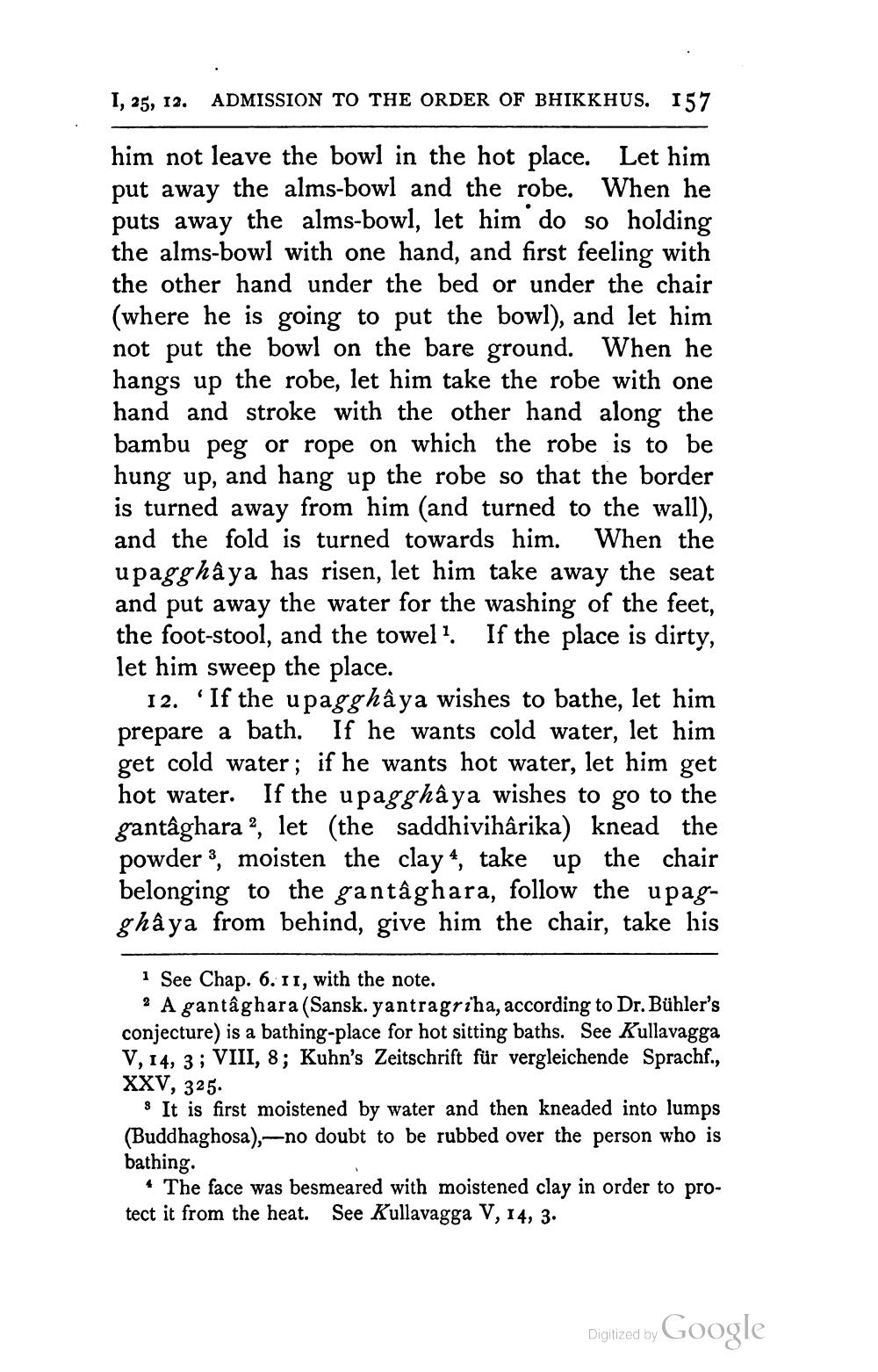________________
I, 25, 12. ADMISSION TO THE ORDER OF BHIKKHUS. 157
him not leave the bowl in the hot place. Let him put away the alms-bowl and the robe. When he puts away the alms-bowl, let him do so holding the alms-bowl with one hand, and first feeling with the other hand under the bed or under the chair (where he is going to put the bowl), and let him not put the bowl on the bare ground. When he hangs up the robe, let him take the robe with one hand and stroke with the other hand along the bambu peg or rope on which the robe is to be hung up, and hang up the robe so that the border is turned away from him (and turned to the wall), and the fold is turned towards him. When the upagghầya has risen, let him take away the seat and put away the water for the washing of the feet, the foot-stool, and the towel? If the place is dirty, let him sweep the place.
12. 'If the upagghầya wishes to bathe, let him prepare a bath. If he wants cold water, let him get cold water; if he wants hot water, let him get hot water. If the upagghầya wishes to go to the gantâghara”, let (the saddhivihârika) knead the powder 3, moisten the clay 4, take up the chair belonging to the gantâghara, follow the upagghầya from behind, give him the chair, take his
1 See Chap. 6. 11, with the note.
? A gantâghara (Sansk. yantragriha, according to Dr. Bühler's conjecture) is a bathing-place for hot sitting baths. See Kullavagga V, 14, 3 ; VIII, 8; Kuhn's Zeitschrift für vergleichende Sprachf., XXV, 325.
8 It is first moistened by water and then kneaded into lumps (Buddhaghosa),—no doubt to be rubbed over the person who is bathing.
The face was besmeared with moistened clay in order to protect it from the heat. See Kullavagga V, 14, 3.
Digitized by Google




